肖邦《升c小调夜曲》详解丨内附谱例 |
您所在的位置:网站首页 › mind music简谱 › 肖邦《升c小调夜曲》详解丨内附谱例 |
肖邦《升c小调夜曲》详解丨内附谱例
|
校对:王力舟 Chopin’s Nocturne in C sharp minor is a short piece – about 3.5 minutes long. By today’s pop music standards that would be considered normal, but it was short against the backdrop of Classical music.This particular nocturne was written in 1830 but wasn’t published until 1870, 26 years after Chopin’s death. 肖邦所作的《升c小调夜曲》是一个短小的作品,时长三分半左右。以现代流行音乐的时长标准来看,这是正常的。但是,以古典音乐为标准,它显得有些短。这首特殊的《夜曲》作于1830年,但是直至1870年才出版,这时距肖邦逝世已经26年了。 It’s sometimes referred to by its tempo marking, Lento con gran espressione.He dedicated this piece to his sister Ludwika, saying “To my sister Ludwika as an exercise before beginning the study of my second Concerto”. Good call on Chopin’s part to make an exercise for that Concerto – it’s extremely difficult! 这首作品有时按照它的速度标记“Lento con gran espressione.”(慢速且富有情感的)来命名。这是肖邦献给他的姐姐路德维卡的作品,上面写道“献给我的姐姐路德维卡,把它作为学习我的《第二协奏曲》前的练习来使用。”《第二协奏曲》的确很难,这句话起到了很好的引领作用。
Pianistic challenges of the Nocturne 《夜曲》的演奏技术难点 Nocturne in C sharp minor is one of Chopin’s more accessible pieces as well – it’s not his easiest, but it’s around an RCM grade 9/ABRSM 7 level . I would consider it to be at an early advanced level.The challenges in this piece involve keeping the opening chords tight without being heavy, letting the trills flow effortlessly, and creating beautiful left hand shape. 《升c小调夜曲》是肖邦作品中比较容易理解的作品。当然,不是最简单的。它的程度是九级(英国皇家音乐学校联合委员会把它定为7级)。我把它看作是高阶入门水平。演奏此首作品的难点在于:开放和弦要弹得集中而不沉重;颤音要弹得轻松且流动;左手手型要漂亮且稳定。
The Nocturne in Pop culture 流行文化中的夜曲 One reason many people are familiar with this nocturne is that it appears in the movie The Pianist (twice – at the beginning and end). It’s not in that movie for fictional reasons, however. The Holocaust survivor Natalia Karp played this piece for a Nazi concentration camp commandant, which impressed him enough to not kill her. 许多人熟悉这首作品的其中一个原因是:它在电影《钢琴家》中出现了两次,一次是影片开头,一次是影片结尾。电影中的情节不是虚构的。事实上,在二战犹太人的浩劫中,幸存者Natalia Karp给纳粹集中营的司令官演奏了这首作品,音乐深深地触动了这位司令官,而Natalia Karp也因此幸免遇难。
Musical features 音乐特征 This nocturne is written in common time but features lots of Chopin-esque tempo benders like expressive triplets and trills. Nocturnes are very expressive and melodically-driven, and usually with a moody character. The form here is ternary (three-part) form. Ternary form is very simple and straightforward, with a main part (A), a contrasting section (B), and a return to the main part (A). 这首《夜曲》是四四拍,具有很多肖邦风格的节奏特点,如:富有表现力的三连音与颤音。肖邦夜曲情感丰富,带有忧郁的特质,旋律极富表现力。作品曲式结构简单明确,为再现单三部曲式。它由呈示段A(a+a1)段,中段B(b+b1),和再现段A组成。 Introduction 引子
The introduction, 4 bars long, feels very formal and final compared to the rest of the piece. It’s all chordal, played with light and specific pedal. The chords sound very resolute and sad and take some care to play in a way where everything sounds simultaneously, and without sounding heavy-handed.The two phrases in the introduction are identical – the second phrase serving as a softer echo. 引子部分由4小节组成。与作品的其余部分相比,引子部分更具有正式感与坚定感。它全部由和弦构成,弹奏时伴以轻巧又富有特点的踏板。和弦的效果听起来坚定而又忧伤,声音齐整且毫无手部重量的压迫感。这是以一种很严谨的方式弹奏出来的。引子中的两个乐句是完全一样的,第二个乐句的演奏效果像是第一个乐句的轻柔回声。 Pianistically, this intro is tougher than it appears. When switching chords you need to keep the top note of the chord smoothly transitioning to the next note – easy with a single melody line, but difficult when your melody is embedded in chords. It’s quiet, so it takes work to get each note to actually sound consistently. 从演奏技术角度来说,它要比谱面上所显示的内容要难弹得多。当进行和弦转换时,你需要把前一个和弦的最高音平滑的转移到下一个音上。当然,如果是单音旋律,演奏起来会容易得多。但是,如果旋律线隐藏在和弦中,那就困难了。况且,这段音乐是安静的,要达到旋律线中每一个音符都是清晰连贯的效果,是需要经过刻苦练习的。 One thing less advanced pianists are wont to do is rely on the pedal to create that legato melody. But not you right?After the intro, a beautiful melody enters and there’s no trace of solid chords anywhere.Let’s take a quick listen to that intro! 还要提及一件事:水平不是很高的演奏者习惯于采用踏板来达到旋律线连贯的效果。但那不是你,对吗?引子过后,进入一段优美的旋律,与之相对应的和弦舒缓而柔和。我们来听一下引子部分。 Main theme 主题
The main theme of the piece, which occurs twice (the second time after a brief interlude), features a beautiful melody over a backdrop of broken chords. These are wide broken chords, often spanning a distance of a 10th, which requires fluid wrist movement.The tempo marking, Lento con gran espressione, means “slow with great expression”. 作品的主题出现了两次(第二次出现在一段音乐之后),它的特点是:以分解和弦为背景衬托出优美的旋律。这些和弦都是大分解和弦,音域跨度经常会超过10度,这种大分解和弦的演奏需要灵活的手腕技巧。这里的速度标记为“Lento con gran espressione”,意思是“慢速弹奏且带有丰富的情感”。 One thing to keep in mind, if you’re learning this piece, is to not go wild with the rubato in the left hand. Rubato, “rubber band tempo”, is often abused in Chopin’s compositions, but Chopin preferred to keep the left hand (the “orchestra”) relatively steady, while having more tempo flexibility in the right hand melody. No easy feat!That being said, a great effect is made when the lowest bass notes are held ever-so-slightly longer, like a tenuto. Again, just a teeny-tiny pinch – it’s easy to go overboard. 如果你正在学习这首作品,有一件事要牢记在心:左手不要滥用自由速度(rubato)演奏,自由速度就是忽快忽慢的速度。这种情况被大量滥用在肖邦的作品演奏当中。其实,肖邦在演奏上更倾向于保持左手(伴奏声部)部分的相对稳定,而右手旋律声部的速度更自由些。这样看来,轻而易举就获得的技能并不存在啊!有人说,‘能够把最低音弹得又轻盈又致远的状态,仿佛保持音一样’才是最棒的声音效果。它就像“紧捏着一个小点”的感觉,这种效果只有全身心的投入到音乐中才能够做到。 Second part of the main theme 主题变化重复
Immediately following the main theme is a repeat – only it’s not repeated exactly. The melody moves more – there’s a glorious waterfall of notes midway through that is difficult to get sounding natural on the piano, since the rhythm differs from the left hand – and there’s some discordant chord choices. 紧接下来的音乐是主题a的重复,但它并不是完全的重复。在这里,音乐更加流动,乐句中有一串音符似瀑布一样华丽的倾泻下来,右手与左手的节奏也颇不相同,甚至还出现了一些不和协的和弦。因此,要使它的演奏获得非常自然的声音效果是很难做到的。 Pianissimo section (Second section) 极其轻柔的中段b
夜曲
第二协奏曲 This is the contrasting section in the piece. Since Chopin was writing this as an exercise for his second Concerto, you can see a tie-in here. These two bars (21 and 22) resemble the main theme from the third movement of that concerto. The next two bars (23 and 24) resemble the second part of the second theme in the first movement of that concerto. 这是并置性中段。既然肖邦把这首作品作为学习《第二协奏曲》之前的练习曲,那么二者之间就存在一定的联系,在这个段落中你就可以看到这点。第21至第22小节的内容与《协奏曲》第三乐章的主题相似;第23至第24小节的内容与《协奏曲》第一乐章第二主题的第二部分相似。 Pianissimo section part 2 中段b1
夜曲
第二协奏曲 There’s one more tie-in – on bar 33, we get a resemblance to the scherzando of the third movement of the concerto (in bar 145 of the concerto). 另外,第33小节也存在与《第二协奏曲》紧密联系的内容,它与《协奏曲》第三乐章的诙谐部分(位于《协奏曲》的第145小节)相似。 Return to the main theme 再现段A
Then Chopin takes us back around to the main theme, recognizable but with slight variations. I love how he holds back throughout this entire piece – you never get a big, satisfying climactic moment, but you have these gorgeous descending trills that never reach a full forte. Less is more. 肖邦又把我们带回了主题,这次主题出现了细微的变化。我很欣赏肖邦对全曲音乐情感的把控能力。因为,在整首作品中,一直都没有出现令人极度兴奋的高潮点,但是音乐却让我们在那些华丽的下行颤音中获得享受,而这些颤音自始至终又都没有使用完满的最强音来演奏。没错,简洁就是高级的艺术。 Ending 尾声
Then you have the ending of the piece, which I consider the most difficult personally. You have to keep the left hand steady, while the right hand plays scale figures in polyrhythm (polyrhythm means they have two different timings at once). 接下来是作品的结尾部分,我个人认为这一部分是最难弹奏的地方。当右手各种特殊分音的跑动(符合节奏意味着音乐同时含有两种不同时值模式)音阶时,左手是稳定的伴奏音型。结尾部分的第二次(第59小节)音阶跑动’的技术是相当难的。 That second run is deadly – done right, it sounds like a glissando dragging up and down the keys. But to get the fingers playing that quickly and nimbly to sound so effortless takes a ton of work. The effect is magical though. 如果能够弹奏得好,声音听起来就会像是把音符拉上来拉下去的滑奏效果。但是,要让手指运动达到这样敏捷的速度,并且让声音听起来毫无费力之感,是必须要经过艰苦练习的。然而,这样练习的效果往往是惊人的。 When I learned this, I drew lines in the music connecting the left hand note to a corresponding right hand note. I used my ear to decide which notes should match up, and it took a lot of trial and error. I probably spent a couple hours just getting the hang of this part. I’d be interested to revisit it now that so many years have passed since I learned it. 当我学习弹奏这段音乐的时候,我在乐谱上画了线,把左手与右手对应的音符连接起来。然后,再用耳朵去辨别正确与否。这种做法是错的,它让我走上了弯路。为掌握这部分技巧,我大概花了几个小时的时间。现在重温这段经历,才发现这些竟然已经是许多年前的事了。
Conclusion 总结 If you’re looking for an excellent interpretation, I enjoy Claudio Arrau’s version – though there is no shortage of recordings of this piece.I hope you enjoyed this analysis of Chopin’s Nocturne in C sharp minor – thanks for listening to Classical music with me! (Claudio Arrau)演奏的版本,这一版本的录音几乎没有缺点。希望您喜欢我对肖邦《升c小调夜曲》的作品分析,感谢您和我一起聆听古典音乐!
欢迎新成员加入!一起发光发热!
|
【本文地址】
今日新闻 |
推荐新闻 |

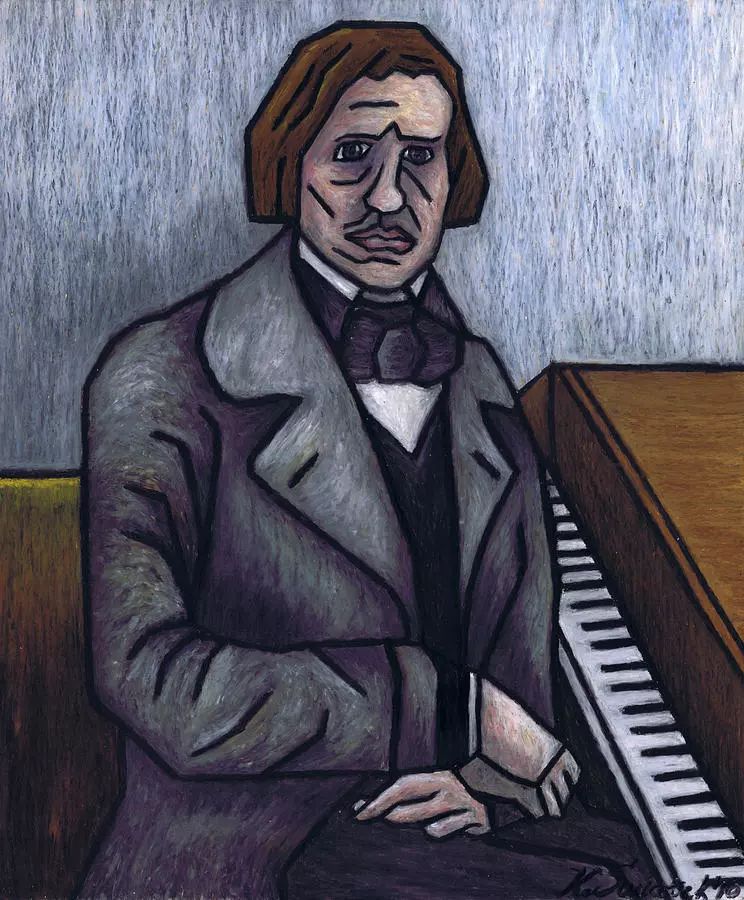
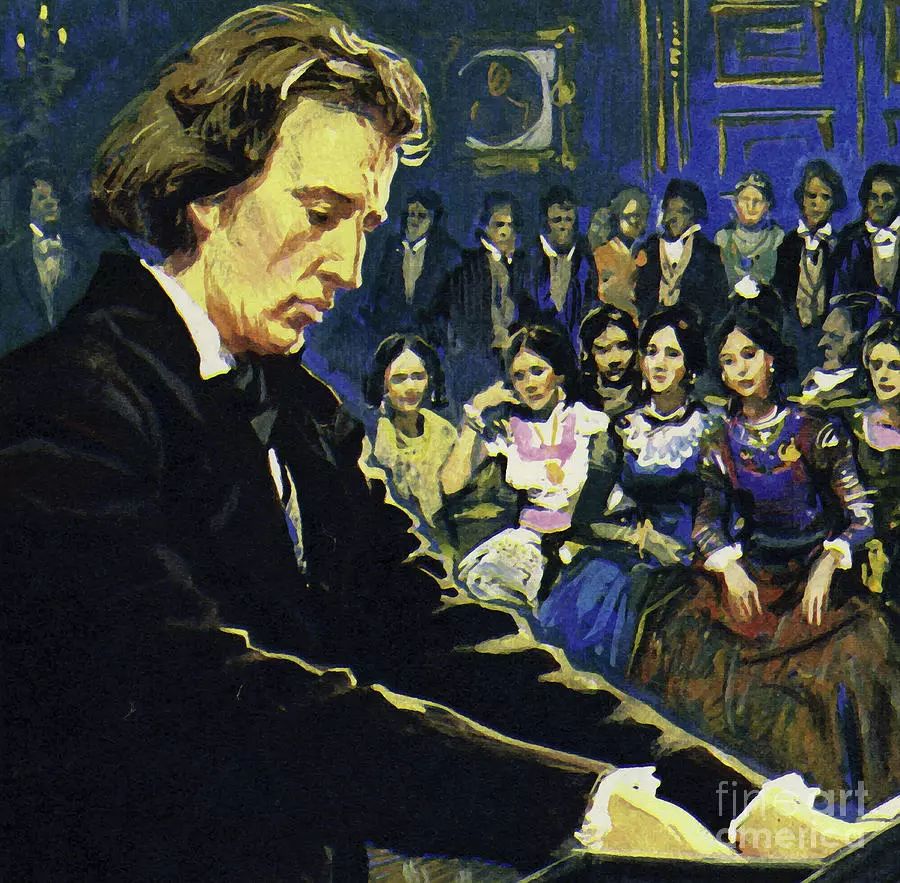

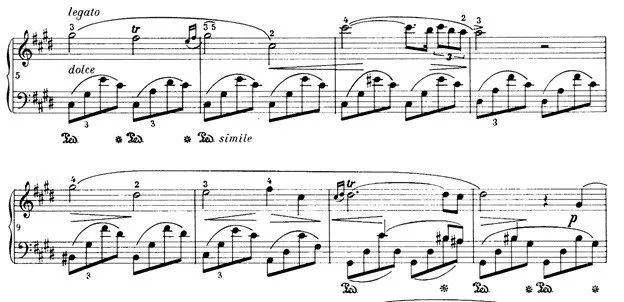
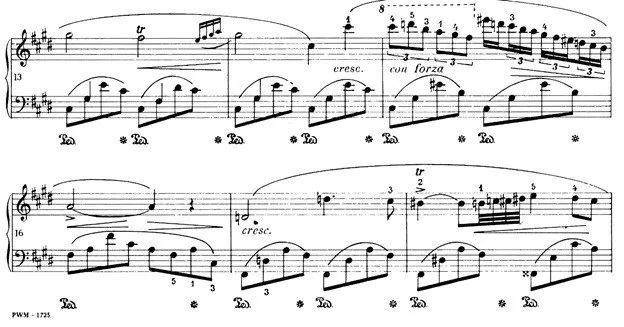
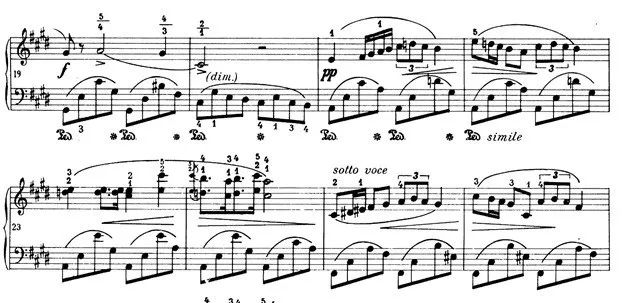

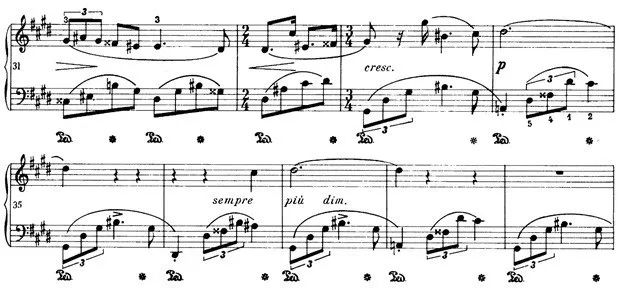

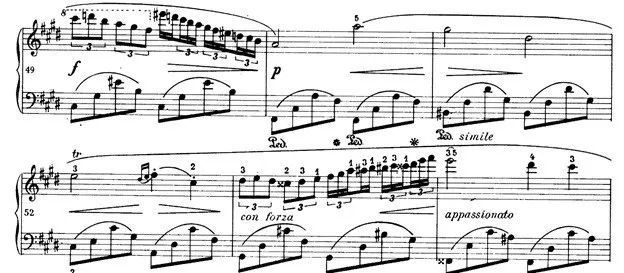


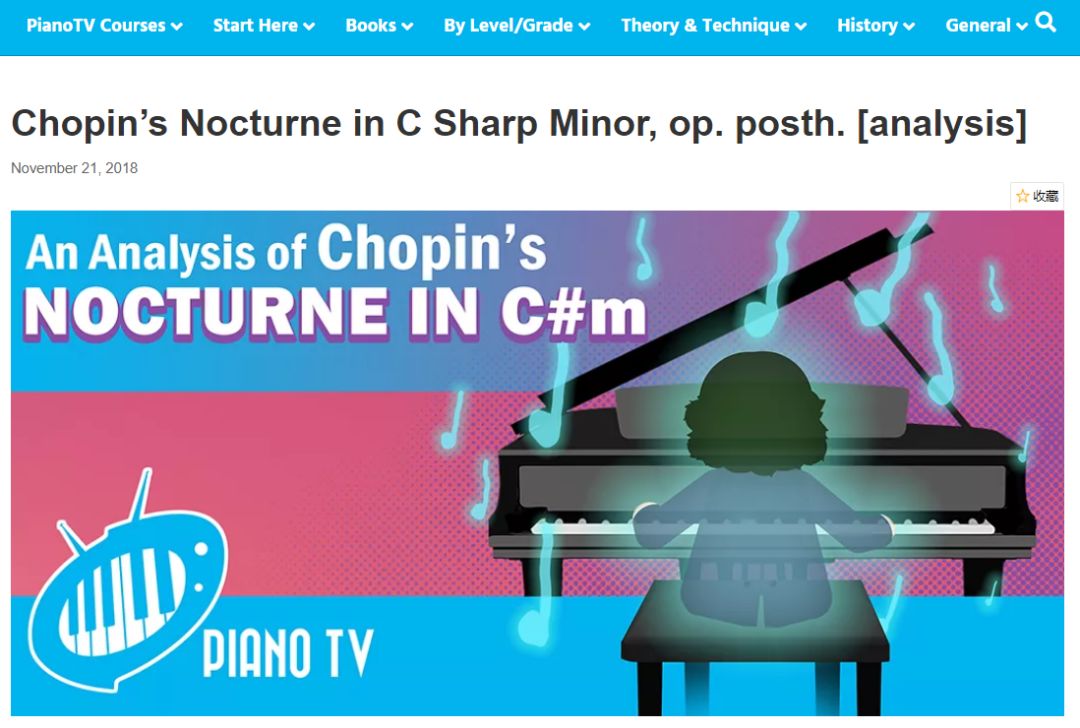
 返回搜狐,查看更多
返回搜狐,查看更多